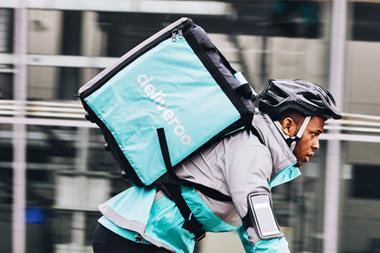It sounds like something out of Dragons' Den or The Apprentice. Talented entrepreneurs vie to catch the eye of a major corporation with the incentive to build a global business if they succeed.
This time, however, the contest won't be hitting the small screen because it is an initiative launched by Procter & Gamble this week to encourage aspiring entrepreneurs, designers and inventors to come up with a ground-breaking idea that could potentially be transformed into a £5om business.
It is not the first time that a multinational has looked beyond its own four walls for something that will give its portfolio a fresh edge - take Cadbury and Unilever's acquisitions of Green & Black's and Ben & Jerry's respectively. Nor is it the first time a company has held a Dragons' Den style contest - Heinz has held such events internally to encourage staff to pitch ideas to senior management, for instance.
But P&G is one of the first major companies to embrace the 'crowdsourcing' phenomenon - a sort of speculative outsourcing of NPD to the masses. It marks a major shift away from the traditional model of secretive, behind-closed-doors, company-based R&D. So why has P&G decided to go down this route and will others follow?
Last year P&G announced plans to source 50% of its NPD from outside companies. A sign of its intent came earlier this year when it threw open a worldwide challenge to find a molecule to remove red wine stains from clothing. Instead of turning to its own R&D department, it published its requirements on a website called InnoCentive challenging scientists from all over the world to come up with solutions.
Its latest project, which is supported by science minister Ian Pearson, is actually the brainchild of the National Endowment for Science Technology and the Arts, which supports innovation in the UK, and British Design Innovation, a not-for-profit group that supports the design industry.
It makes sense to look outside for true innovation, says David Simoes-Brown, development manager at NESTA. "P&G has the humility to know no one company can employ all the brightest designers and get the best from them week after week," he says. "Development gets constrained by a company's way of doing things, which sometimes makes it hard for innovation to come from within. This project gives designers a blank sheet of paper ."
There's also a cost incentive. P&G can tap into a vast number of ideas for a fraction of the price of running an in-house team or buying small companies with exciting brands. The fees for the NESTA Open Innovation Challenge come out of lottery funds. All P&G needs to invest in is executive time briefing designers in workshops and sitting in on final presentations. The hope is that among the finalists will be a winning proposition that could eventually be built into a business worth more than £50m and the good news for the entrepreneurs is that they will retain the intellectual property rights to their ideas.
The group is confident that the concept will take off and says two other companies have already expressed interest in staging similar events to the P&G Open Innovation Challenge .
"Where P&G leads other companies will follow," says John Noble, director of the British Brands Group. "It is increasingly difficult these days to find a competitive edge and to generate enough innovative ideas internally."
This time, however, the contest won't be hitting the small screen because it is an initiative launched by Procter & Gamble this week to encourage aspiring entrepreneurs, designers and inventors to come up with a ground-breaking idea that could potentially be transformed into a £5om business.
It is not the first time that a multinational has looked beyond its own four walls for something that will give its portfolio a fresh edge - take Cadbury and Unilever's acquisitions of Green & Black's and Ben & Jerry's respectively. Nor is it the first time a company has held a Dragons' Den style contest - Heinz has held such events internally to encourage staff to pitch ideas to senior management, for instance.
But P&G is one of the first major companies to embrace the 'crowdsourcing' phenomenon - a sort of speculative outsourcing of NPD to the masses. It marks a major shift away from the traditional model of secretive, behind-closed-doors, company-based R&D. So why has P&G decided to go down this route and will others follow?
Last year P&G announced plans to source 50% of its NPD from outside companies. A sign of its intent came earlier this year when it threw open a worldwide challenge to find a molecule to remove red wine stains from clothing. Instead of turning to its own R&D department, it published its requirements on a website called InnoCentive challenging scientists from all over the world to come up with solutions.
Its latest project, which is supported by science minister Ian Pearson, is actually the brainchild of the National Endowment for Science Technology and the Arts, which supports innovation in the UK, and British Design Innovation, a not-for-profit group that supports the design industry.
It makes sense to look outside for true innovation, says David Simoes-Brown, development manager at NESTA. "P&G has the humility to know no one company can employ all the brightest designers and get the best from them week after week," he says. "Development gets constrained by a company's way of doing things, which sometimes makes it hard for innovation to come from within. This project gives designers a blank sheet of paper ."
There's also a cost incentive. P&G can tap into a vast number of ideas for a fraction of the price of running an in-house team or buying small companies with exciting brands. The fees for the NESTA Open Innovation Challenge come out of lottery funds. All P&G needs to invest in is executive time briefing designers in workshops and sitting in on final presentations. The hope is that among the finalists will be a winning proposition that could eventually be built into a business worth more than £50m and the good news for the entrepreneurs is that they will retain the intellectual property rights to their ideas.
The group is confident that the concept will take off and says two other companies have already expressed interest in staging similar events to the P&G Open Innovation Challenge .
"Where P&G leads other companies will follow," says John Noble, director of the British Brands Group. "It is increasingly difficult these days to find a competitive edge and to generate enough innovative ideas internally."



















No comments yet